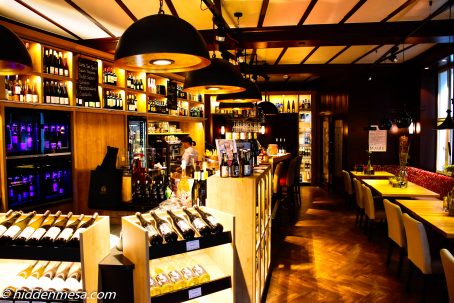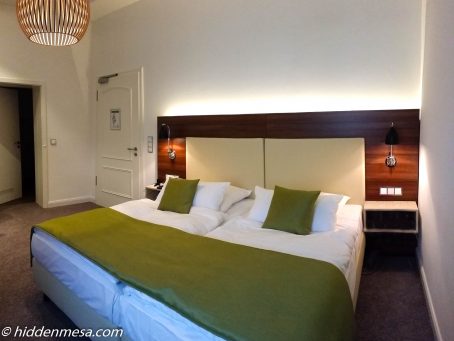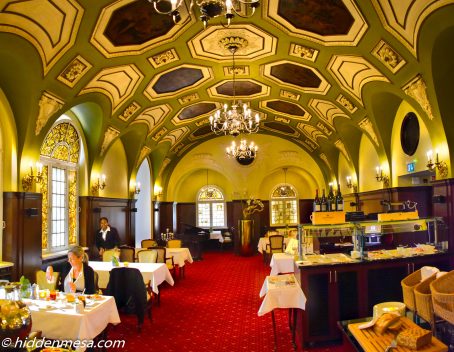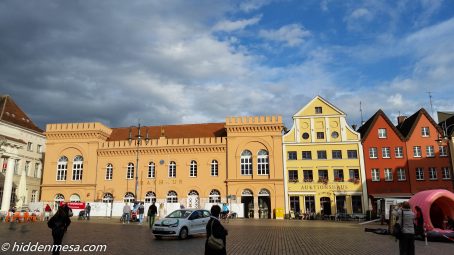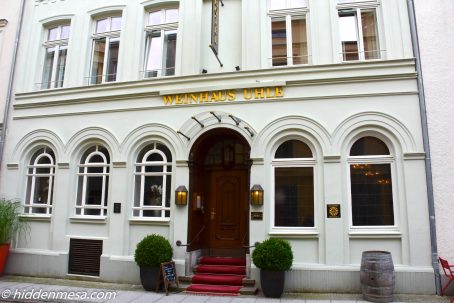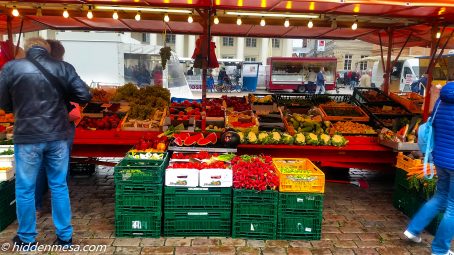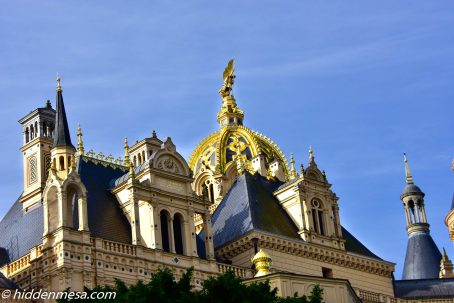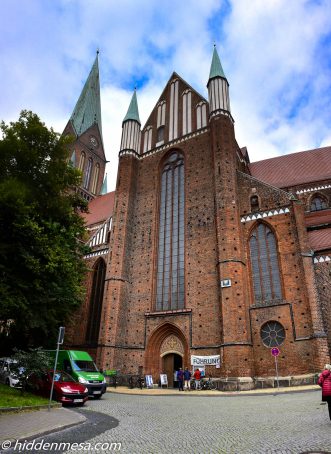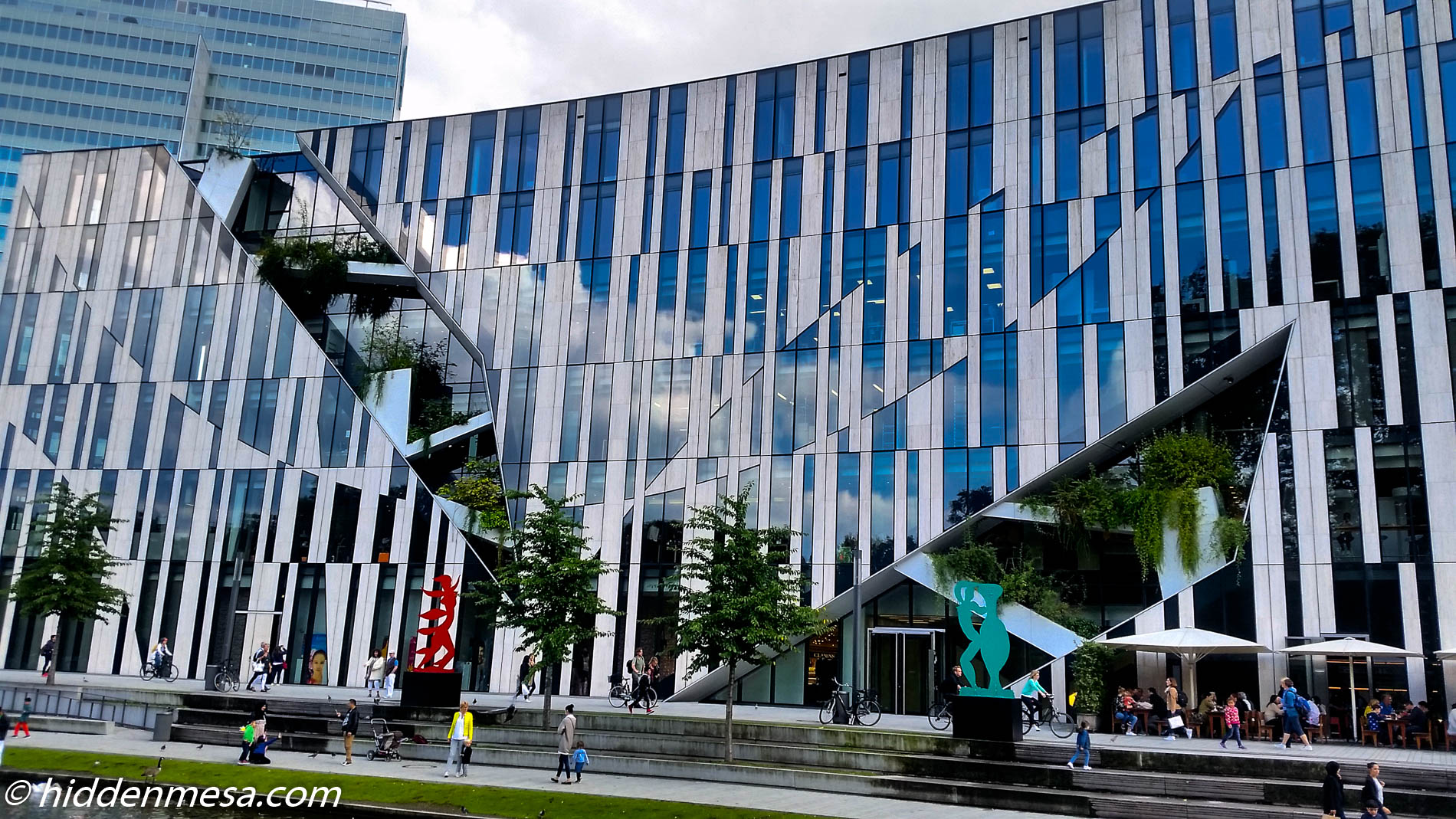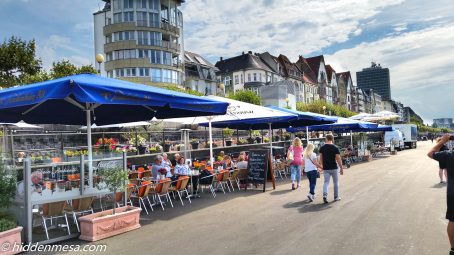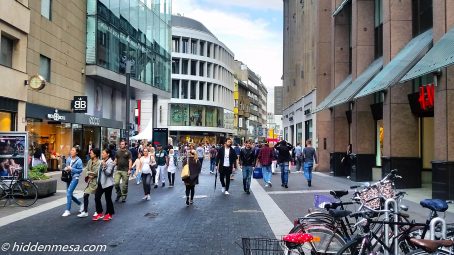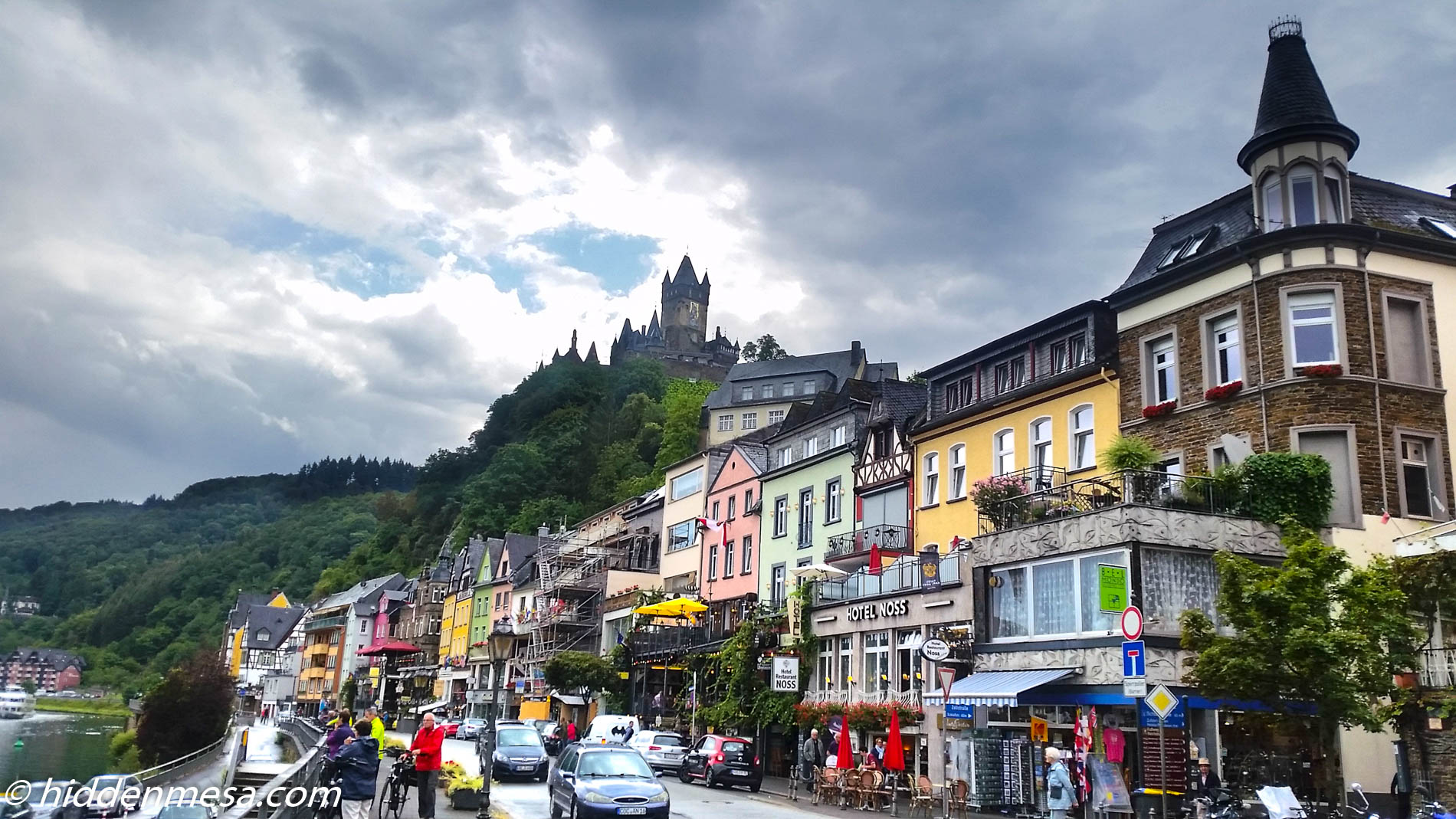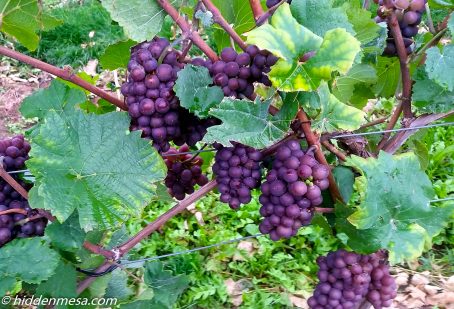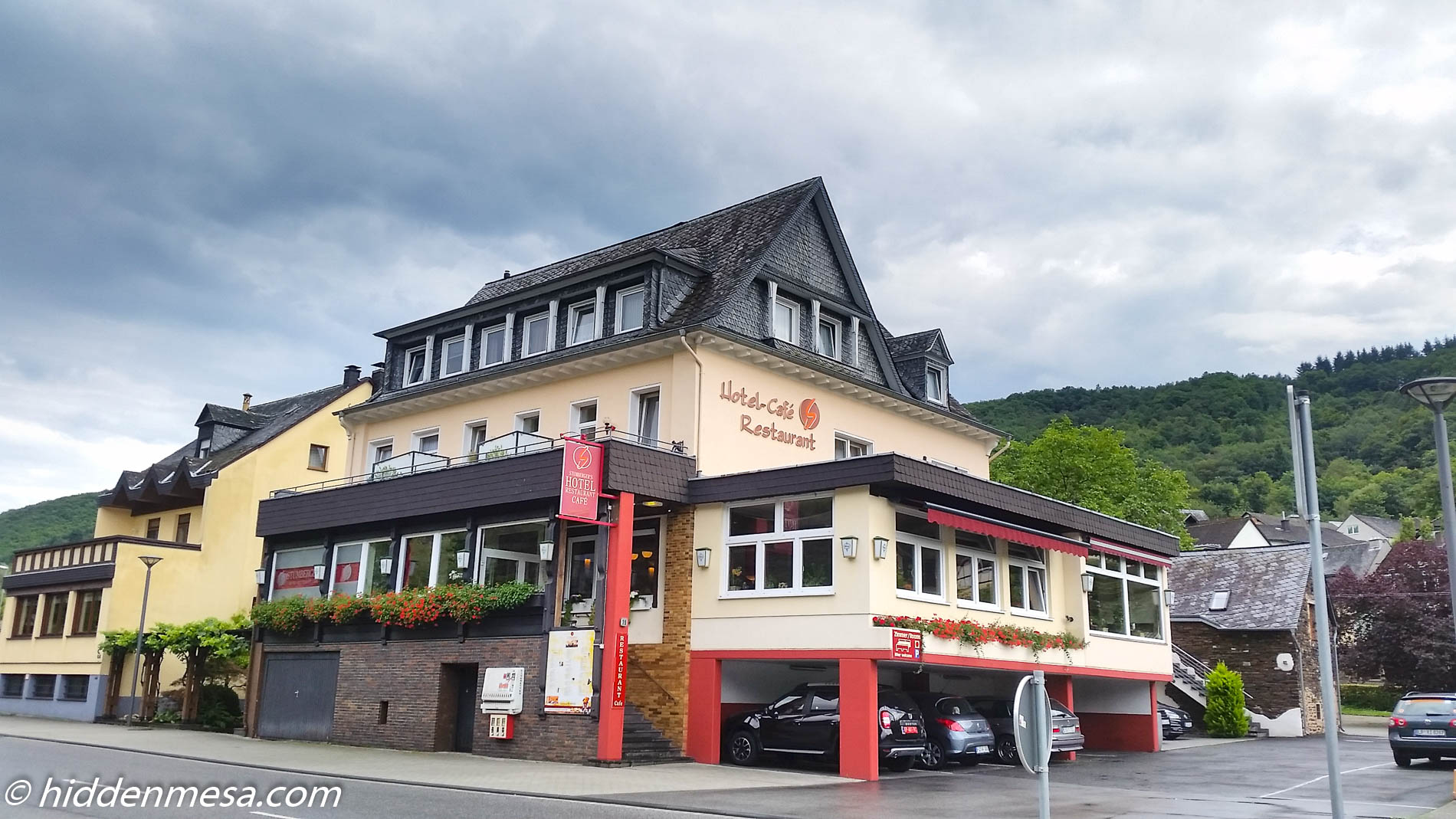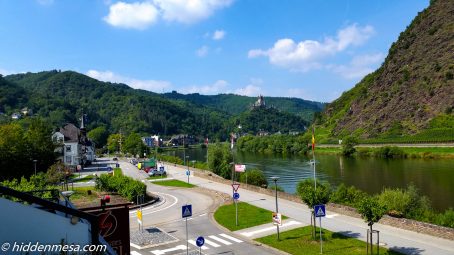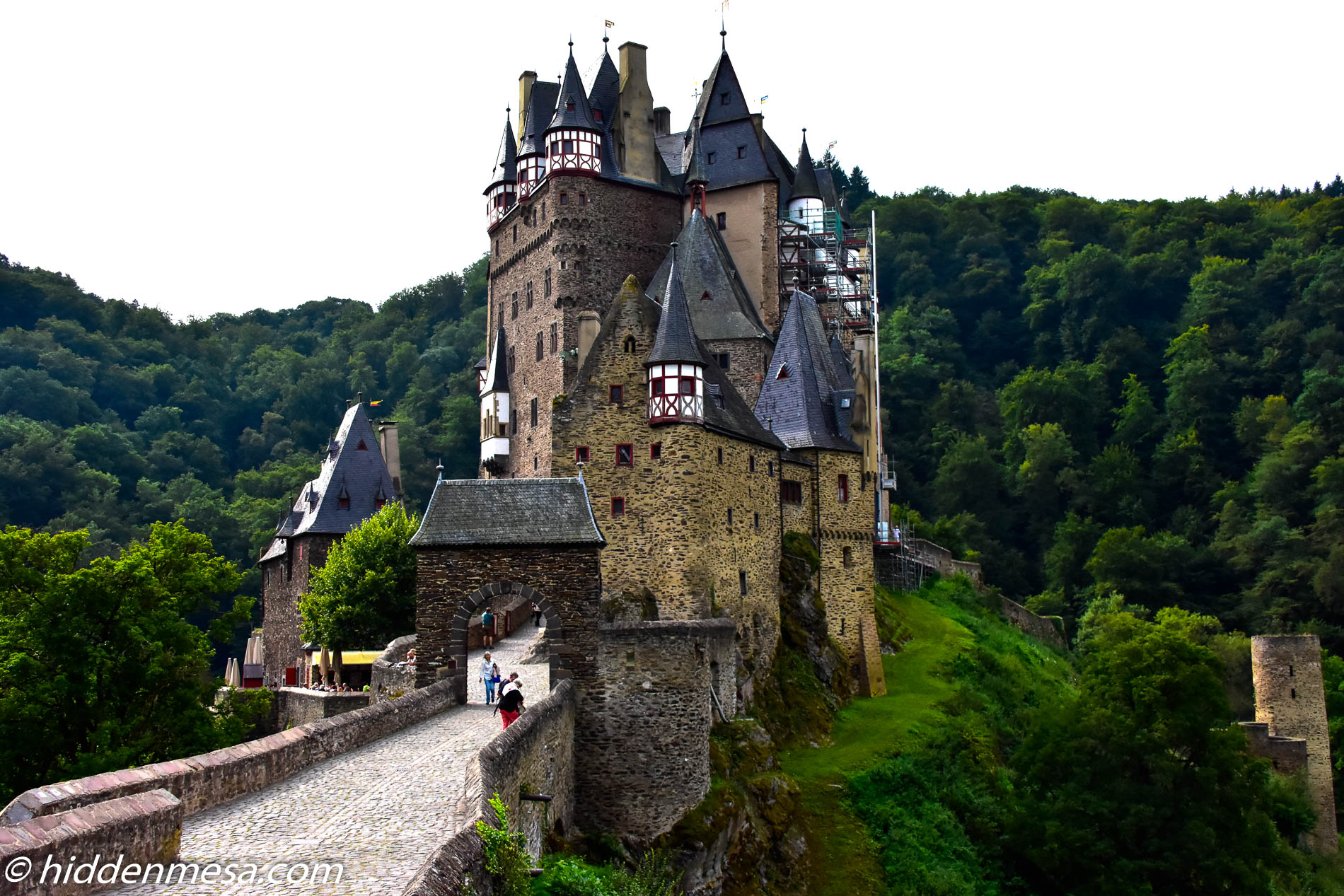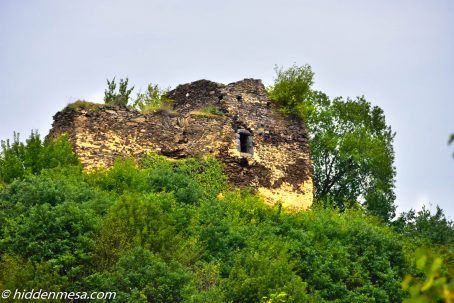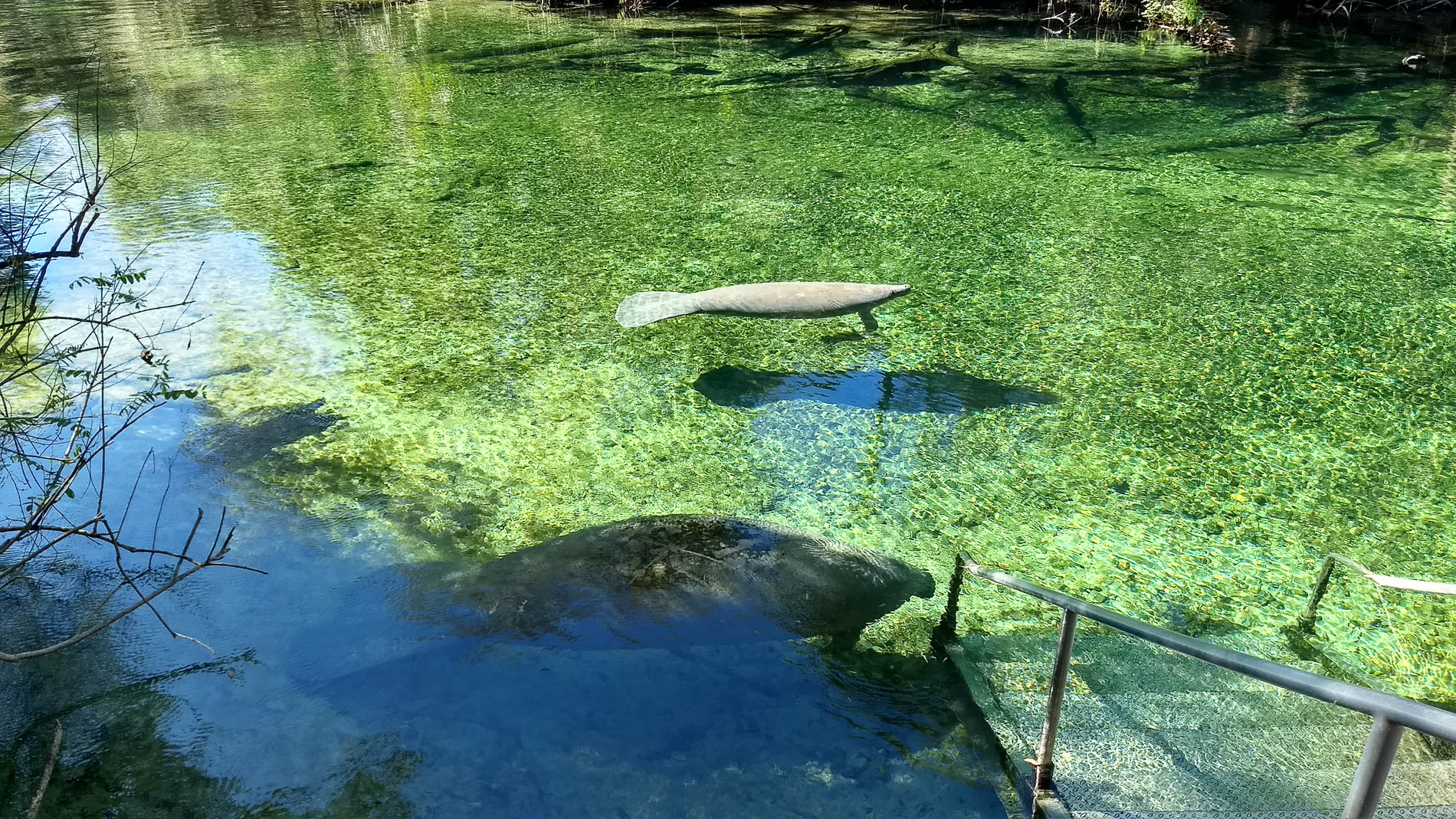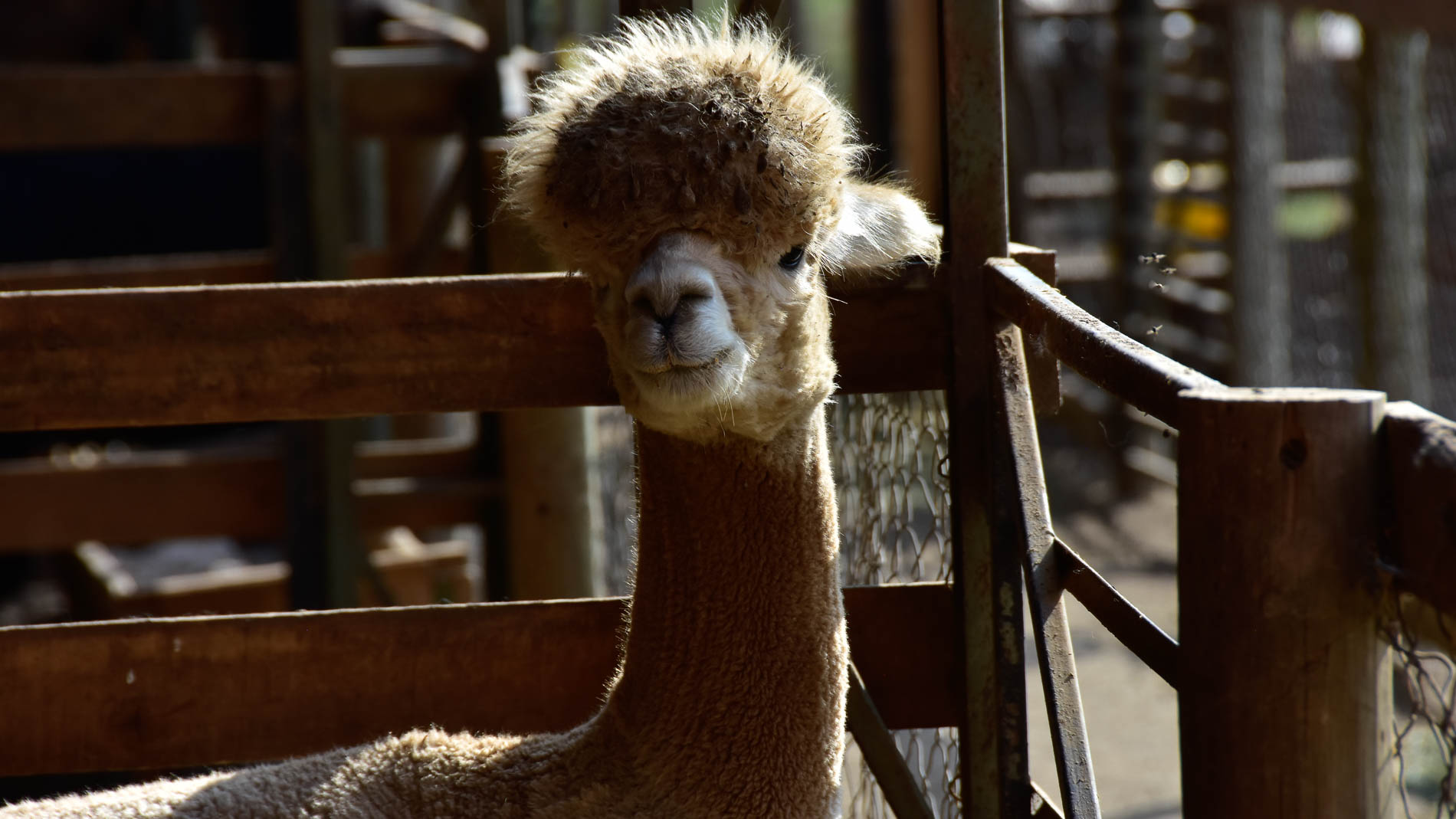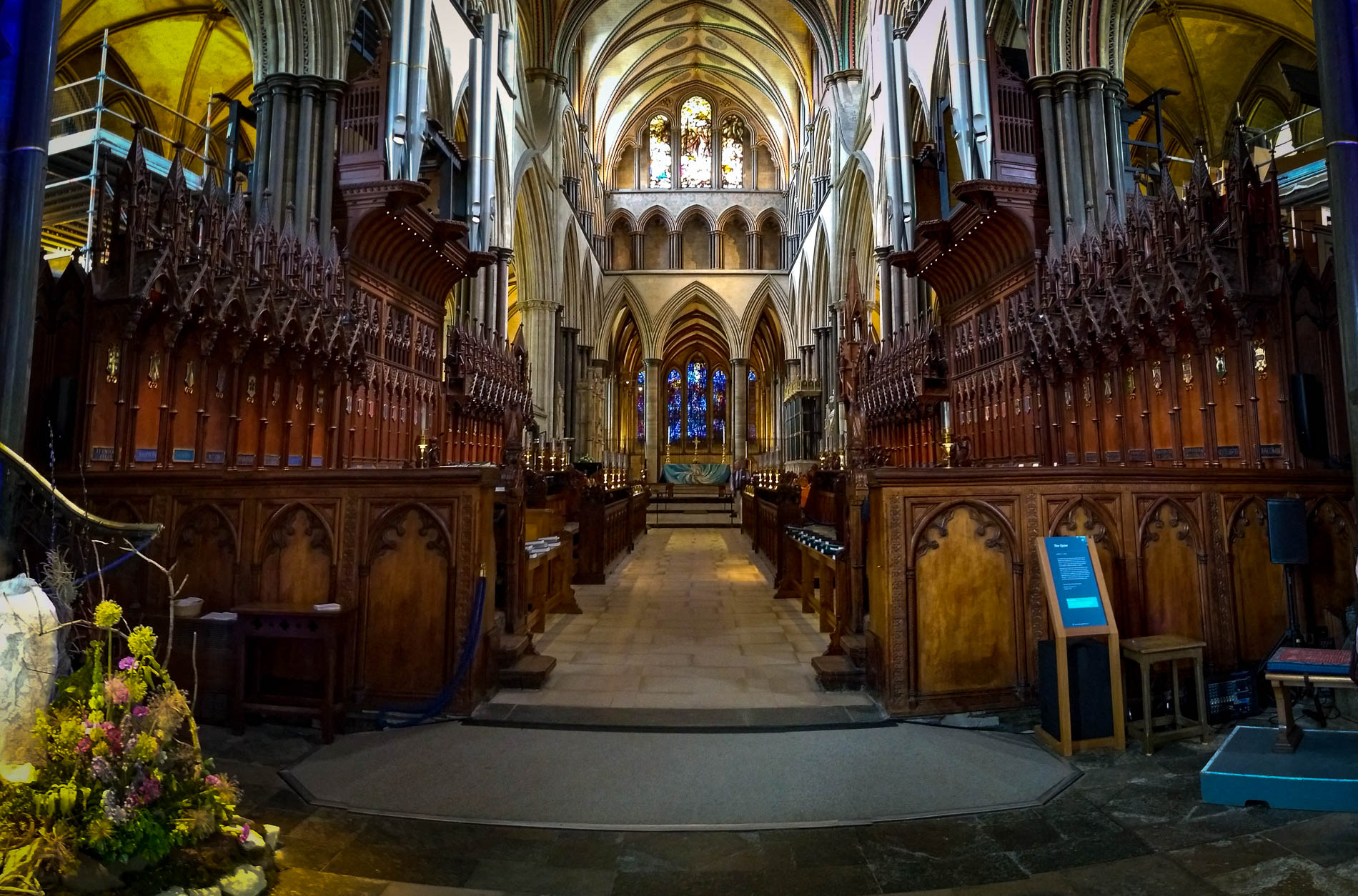The first time we stayed in Schwangau, we made our home at the Villa Ludwig, a small eighteen room hotel just on the outskirts of town. We were so taken with this little hotel that we booked an even longer visit here on our second trip.
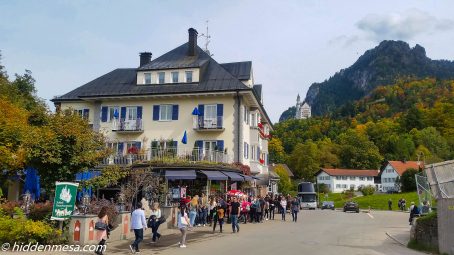
Tourists can take over the village of Schwangau at times, spilling into the streets. Locals seem to take it in stride. Photo by Bonnie Fink.
Schwangau is a small town along the southern border of Germany, within a literal stone’s throw of the border with Austria. In fact, when driving around just randomly looking over the country side, much of our sightseeing was in Austria. Of course, with the European Union fully entrenched here, it’s hard for us outsiders to actually know when we leave one country and enter another. The signs denoting the event are not much different than driving from one state to another in the US. If anything, they’re usually smaller and less significant.
The hotel is modern. It was first in operation in 2012. The main lobby or reception area serves as a dining room where breakfast and an afternoon snack are provided. There is underground parking, and there’s reasonably good internet.

Here’s a view of Neuschwanstien Castle as seen from Villa Ludwig. Many of the rooms have a castle view from the balcony. Photo by Donald Fink.
The hotel has a great view of Neuschwanstien Castle. This is the famous castle designed and built by Mad King Ludwig II. King Ludwig grew up in the village’s other castle, Hohenschwangau, which was built by his father, Maximillian II of Bavaria.
The Disney fans in the crowd will know that Walt Disney’s inspiration for Cinderella’s Castle at the Magic Kingdom came in part from the Neuschwanstien Castle here in Schwangau. You can certainly see the resemblance when comparing the two. It seems that the parts of Neuschwanstien that were most attractive and over the top were re-created with gusto in Cinderella’s Castle. We haven’t visited the castles on this trip, preferring instead to concentrate on other activities in the surrounding area, but we wrote about the castles of Schwangau on our first visit here.
Walking to town from Villa Ludwig takes about five minutes. This is good. There’s lots of parking in town, but it’s so busy with tourists that having a free parking spot underground at the hotel is a real treat. We have been able to access all parts of town and the castles on foot, saving the car for our adventures into the alps of Austria, located just behind the castles.
Pricing
This hotel is not a youth hostel. You won’t find it in a book about how to get around Europe on $15.00 a day. In fact, it’s the most expensive hotel we’ve stayed in this trip. But is it worth it? For us, it’s been worth every penny. The price included internet, breakfast, parking, snacks in the afternoon, free bicycle “rental”, and free concierge service.
If you’re planning any activities in town that require a ticket, don’t pass up the concierge service at the hotel. They can arrange everything with absolutely no trouble for you. The one day we walked by a ticket center in town, the line for castle tours was out the door and wound around the street; not our idea of the best use of your time.
The bottom line is, sure this hotel was more expensive than others we’ve found, but the value was certainly there. In fact, when it comes to value, the prices at Villa Ludwig were similar to prices at other hotels in Schwangau, so it might be argued that with the amenities they offer, it’s actually a bit better value than other establishments.
Everyone at the hotel seems to speak good English, including the folks that service the breakfast in the morning. We didn’t speak to the house keeping people, but they probably speak English too.
Chalet
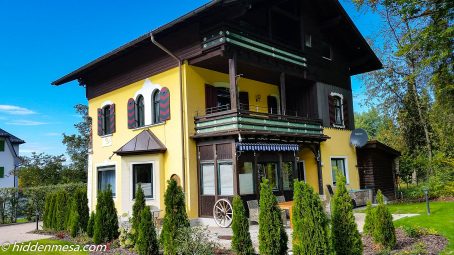
The ordinary rooms at Villa Ludwig are good, but if you need a little more room, or more privacy, there’s always the Chalet in the back. This is new for this year and should be popular with guests traveling with large families. Photo by Donald Fink.
There’s a separate building that just recently opened in the back of the hotel called the Chalet. This building houses only two suites, each with multiple bedrooms in different configurations. This Chalet is for groups, families, or folks wanting a very special place to stay while in Schwangau. They have kitchens and separate living rooms apart from the bedrooms. They’re complete apartments, appointed in a tastefull and thoughtful way that lets you know that you’re in a place where kings once lived.
The Chalet is not for everyone, but can be something to think about if you’re visiting with a small group or family.
Rooms
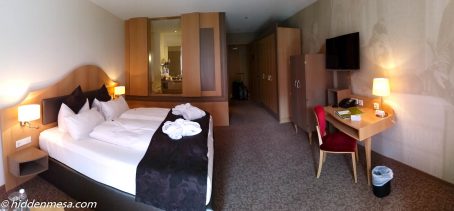
View of the Junior Suite ”Parsifal” at Villa Ludwig. There was plenty of room, lots of electrical outlets, and good WiFi. Photo by Donald Fink.
Our room was a more or less common room with a single king size bed, done in the European style. This means that the bed was made with two separate quilts. There were plenty of plugs around for our electronics and the WiFi signal was strong in the room. There was a fully equipped mini bar which we partially unloaded to make room for a carton of milk. There was also a kettle and a coffee machine.
We also had a view of Neuschwanstien Castle by stepping out on th balcony and looking left. Other rooms had better views but they were more expensive suites. Some rooms have no view of the castle. You need to specifically ask for a Castle view when you make your reservations.
Services
The staff has a concierge service and will take care of reservations for Castle tours, or just about any other kind of excursion you could want. Their German is probably better than yours, so it’s not a bad idea to let them help if you’re the least bit uncomfortable about this kind of thing. Also, if the reservations you’re trying to make are in any way complicated, it would be a good idea to let them help since their language skills—meaning their ability to translate into English—are all excellent. We didn’t use their service since we didn’t do any organized tours this time around, but we did consult about other things to do since they’re locals and know the area.

The underground Garage at Villa Ludwig. This guest parking area has nineteen spaces. There are eighteen rooms in the hotel. Looks like they’ve got it covered. Photo by Donald Fink.
There are nineteen parking spaces under the hotel, plus a staff parking area outside to take care of staff and service vehicles. Since there are eighteen rooms, there’s a pretty good chance you’ll have a place to park if you bring a car.
Breakfast is daily. They serve American style bacon and scrambled eggs. You may think it’s unusual to mention this, but after a couple of months in Europe, we get excited when we see something besides hard boiled eggs and cold sandwich meat for breakfast. And of course, there are the usual pastries, jams and jellies. And if you actually like hard boiled eggs and cold sandwich meats for breakfast, they have those too.
We prefer walking, but we already mentioned that the hotel provides free bicycles and helmets if you prefer to move around the village and surrounding area that way. They can suggest some routes to see the countryside too.
The internet is free here, which is a change from our stay two years ago. Latency times were in the 20-30 millisecond range and downloads were as fast as 15 megabits, but when afternoon comes around and everyone is on the internet, it slows down quite a bit. We suspect that if we cared to look into it, we would find that the internet service is probably dictated by what’s available in this small town. We could complain to the hotel, and they could complain to the internet provider, but it probably wouldn’t get any better any time soon. It’s just how things are in a small town.
Truthfully, the internet is good enough to check email and do some casual browsing in the evenings. At all other times, it’s good for streaming, skyping, or whatever high bandwidth activity you have in mind. You just have to pick you’re times carefully if you’re going to do something that requires a lot of bandwidth. We’re just spoiled.
We would be hard pressed to say that Villa Ludwig is our absolute favorite hotel of this trip simply because we’ve stayed in so many great places. We wrote about Stumberger’s in Cochem and Weinhaus Uhle in Schwerin earlier, and if we visit those areas again, we’ll certainly use them. But when we come to the southern part of the country, and we certainly will, Villa Ludwig will be our first choice. We’ve stayed here twice now in two years, and haven’t been disappointed yet.



